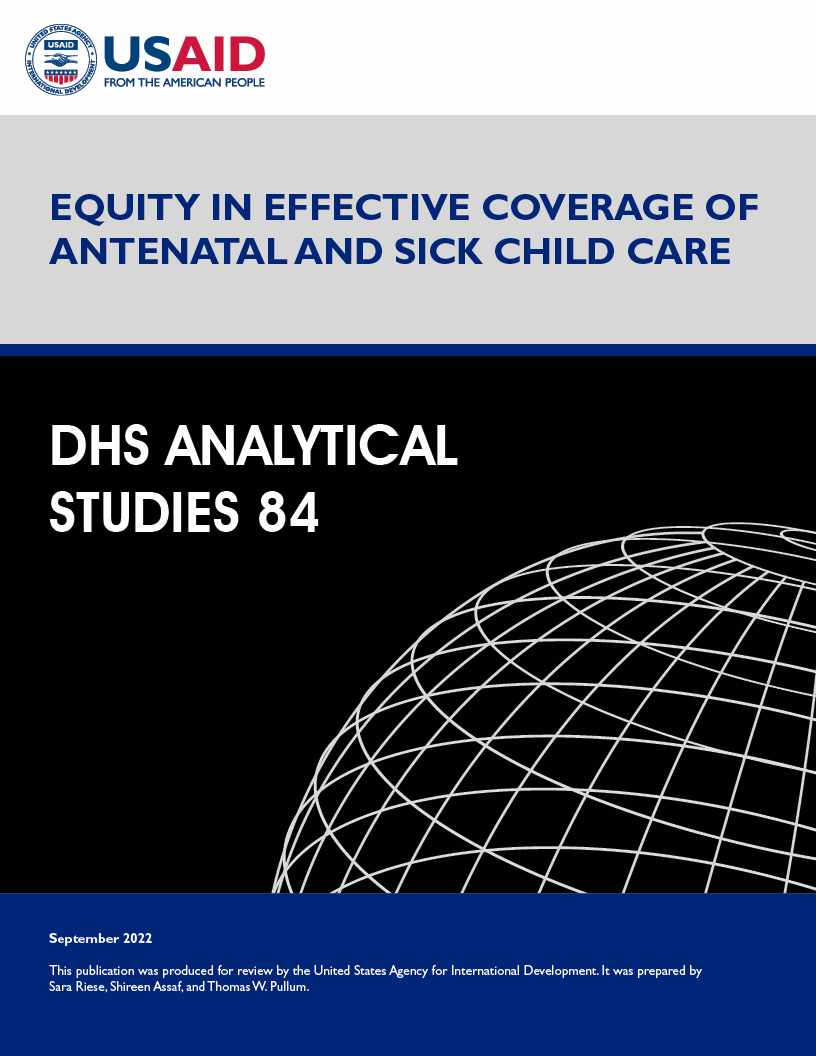- PUBLICATIONS
- JOURNAL ARTICLES
- ACCESS PUBLICATIONS
Publications Summary
- Document Type
- Analytical Studies
- Publication Topic(s)
- Child Health and Development, Health facilities/SPA surveys
- Country(s)
- Malawi, Senegal, Tanzania, Nepal, Haiti
- Language
- English
- Recommended Citation
- Riese, Sara, Shireen Assaf, and Thomas W. Pullum. 2022. Equity in Effective Coverage of Antenatal and Sick Child Care. DHS Analytical Reports No. 84. Rockville, Maryland, USA: ICF.
- Download Citation
- RIS format / Text format / Endnote format
- Publication Date
- September 2022
- Publication ID
- AS84
Download
 Equity in Effective Coverage of Antenatal and Sick Child Care (PDF, 1576K)
Equity in Effective Coverage of Antenatal and Sick Child Care (PDF, 1576K)
Download this publication
There is no printed copy available to order.
